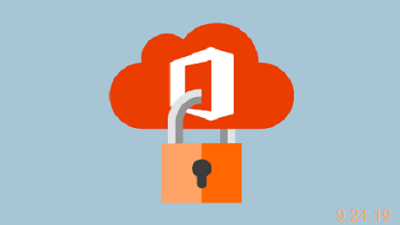|
Data-center companies face two pressing questions. First, how do they increase the density of computing power that high-performance systems need to support AI and machine learning? Second, how do data centers slash their carbon footprint in an environmentally aware market? Spanish company Submer believes it can help answer them both. With 40 clients in Europe and the US, Submer says it can cut the energy consumption of traditional air cooling and increase the viable density of high-performance computing by a factor of 10. Liquid submersion is common in the electric power-distribution infrastructure in components such as transformers, but it is rarely used for cooling IT hardware. In principle, submerging computer components is more efficient because liquids absorb more heat and take longer to heat up than air. The approach can also allow the overall system to run at higher temperatures because liquids help prevent hotspots that damage components. Obviously, it is important that liquid coolants do not conduct electricity. Although cold-plate liquid cooling is sometimes used in a closed system to cool the system chassis, immersing the whole system in liquid is almost unknown in computing. Submer was founded by Daniel Pope, a tech entrepreneur also behind Webhosting company Datahouse Internet, which he sold to Telefonica Group in 2010. He says one of the challenges to gaining acceptance in data centers was to build an immersive cooling system that could be easily managed in that environment. "The products that were out there had a very industrial approach and they really didn't look like something you'd place next to your racks. We designed a machine that is operated in a way that a data-center manager feels comfortable with." The other problem for industrial cooling liquids is compatibility with computing components – they can damage some of the plastic commons in server components. Founded in 2015, Submer has developed a dialectic fluid formula that Pope says can be manufactured anywhere in the world. Learn more from OUR FORUM. The National Cyber Security Centre Finland (NCSC-FI) which acts as Finland's National Communications Security Authority published today a detailed guide on how to secure Microsoft Office 365 against data breaches and credential phishing. NCSC-FI's guide is focused on mitigating Microsoft Office 365 phishing which can lead to stolen credentials and to financial losses in the event of a successful Business Email Compromise (BEC) scam fraud that would use the stolen information. To put the seriousness of BEC attacks into perspective, FBI's Internet Crime Complaint Center (IC3) received victim complaints regarding 166,349 domestic and international incidents between June 2016 and July 2019, with a total exposed dollar loss of more than $26 billion according to a PSA issued on September 10. The same day, the U.S. Department of Justice (DoJ) said in a press release that 281 individuals were arrested over a four-month period in the U.S. and around the world as part of Operation reWired, a worldwide coordinated effort to disrupt BEC schemes. The first step to secure Office 365 against phishing and security breaches is to secure identities by customizing login pages to match the organization’s look, using hard to crack passwords, securing the local Active Directory, enabling modern authentication, blocking legacy email protocols without two-factor authentication (2FA) support, enabling 2FA, using conditional access, and carefully manage administrator roles. Next in line is securing Office 365 email accounts by securing email routing by rejecting emails that aren't sent over TLS and aren't sent by parties authenticated using certificates. Also, users should be secured against junk, malware, phishing emails, and zero-day attacks with the help of Office 365 Advanced Threat Protection (Office 365 ATP) via the ATP Safe Attachments, ATP Safe Links, and ATP Antiphishing features. To learn more and get the full guide to navigate to OUR FORUM. Google Alerts is s useful service that allows you to receive emails or an updated RSS feed when new pages appear in the Google search index that is related to specified keywords you are following. Unfortunately, whenever there is a good thing, people try to take advantage of them to push users towards scams and malware. For those not familiar with this service, Google Alerts allows you to submit keywords that you wish to monitor. When new pages are found that match these keywords, depending on how you create the alert, Google will either send you an email or update an RSS feed. I have been using Google Alerts for many years in order to track various malware and security topics. Over the past year, if not longer, I have noticed a trend where bad actors are injecting malicious sites into the Google search index in order to have them also appear in Google Alerts being sent to users. When a user clicks on one of these alerts, they will then be sent to a page that then redirects them through a series of other pages until they finally land at a fake giveaway page, tech support scam, unwanted extension, or malware installers. To get malicious links into Google Alerts, bad actors will create spam pages with popular keywords and get them into the Google search index. For example, as we publish a lot of ransomware news, I have a Google Alert set up for Ransomware. Knowing that users are desperate for decryptors, the bad actors create fake spam pages containing blobs of text containing keywords related to a particular decryptor that may be affecting a lot of users at the time. When the bad actors create these pages and get them into the Google index, an alert will be generated for anyone who wants to be notified about ransomware, decryptors, or the STOP ransomware. When a user clicks on a link through a Google Alert or via the Google search engine, instead of showing the web page shown earlier in the article, they will be redirected to a malicious site like the tech support scam shown below. Follow this by visiting OUR FORUM. |
Latest Articles
|


